Becoming the Maker you Want to Become: Introduction
I’ve been writing a few posts to steer those seeking hand tools as part of their home working that will lead them on a clear path of what is actually needed to get started and keep going. Hand tools are just as viable a means of achieving as any other, and in most cases, and it’s not just my own view. I’ve helped many a hundred thousand to get started on their exciting and exhilarating journey. For many, if not most, the hand tool methods meet the exact needs of amateur woodworkers and expand those of machinists exponentially. When you master hand tools, you can go in any direction you want to. It’s not the same with other methods. Hand tools will open the door to deep depths of understanding wood that you can never get any other way. It’s a technology that started millennia ago and just keeps expanding into the lives of people who want real physical work and all of the merits that go with it. You start with physical connections to your material and the tools, critical thinking is essential, the exercise touches every sinew and muscle in your body and your core muscle, the very centre of your being, the heart, the lungs and more take their part in keeping you fit and healthy. Before you know it, even on the very first day, you just feel good about yourself. What more can you ask for? A new dawn just began.
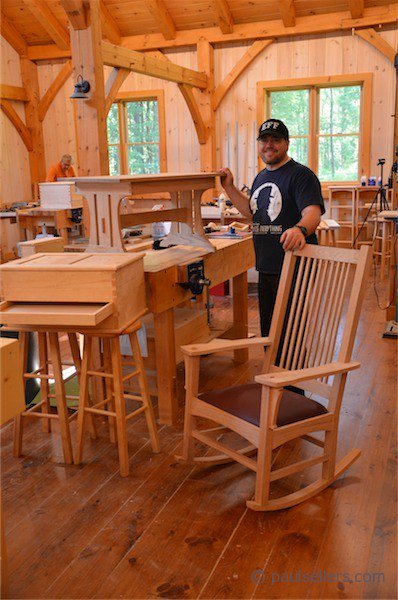
I should start out by telling you that hand tool making is not a second-class way of making but a truly first-class option and a way of achieving far beyond just what you make three-dimensionally but where you enter the multidimensionality of inner depth These opening lines of mine, what I’m writing here and hitherto unwritten, are just as important as going to the workbench and lifting the tools to work. We all need to understand why we work doing what. The purpose is not so much what we make, but how we make. It’s not to pass time, like reading a novel or watching TV, it’s developing your skills, yes, but it’s also developing your mind. This attitude and aptitude should be the purpose of all that we do. Crafting and taking charge of disarray and confusion, converting raw to refined, is what we artisans do in our day to day. We define the undefined and make order out of chaos wherever we can. Woodworking with hand tools is all about accuracy and care, decision-making and developing our understanding of the wood we work along with the tools we use to do it. When I state the words ‘hand tools’ I am not talking about any machine here, whether stationary or hand held, I am talking only about those tools driven and held, directed and guided wholly by our own energy and the power to grip, drive, hold, present, steer and use them. We provide all of the accuracy, the guidance and the energy to drive whichever tool we hold into and over and through the wood. We deliver cutting edges of every type, be that saw tooth, chisel edge or plough-plane cutter into the wood rather than merely pushing wood into the machine. And there, if you will, lies the pivotal difference. That’s the fulcrum point where with the very slightest of pressure the scale gets tipped favourably to a better life.
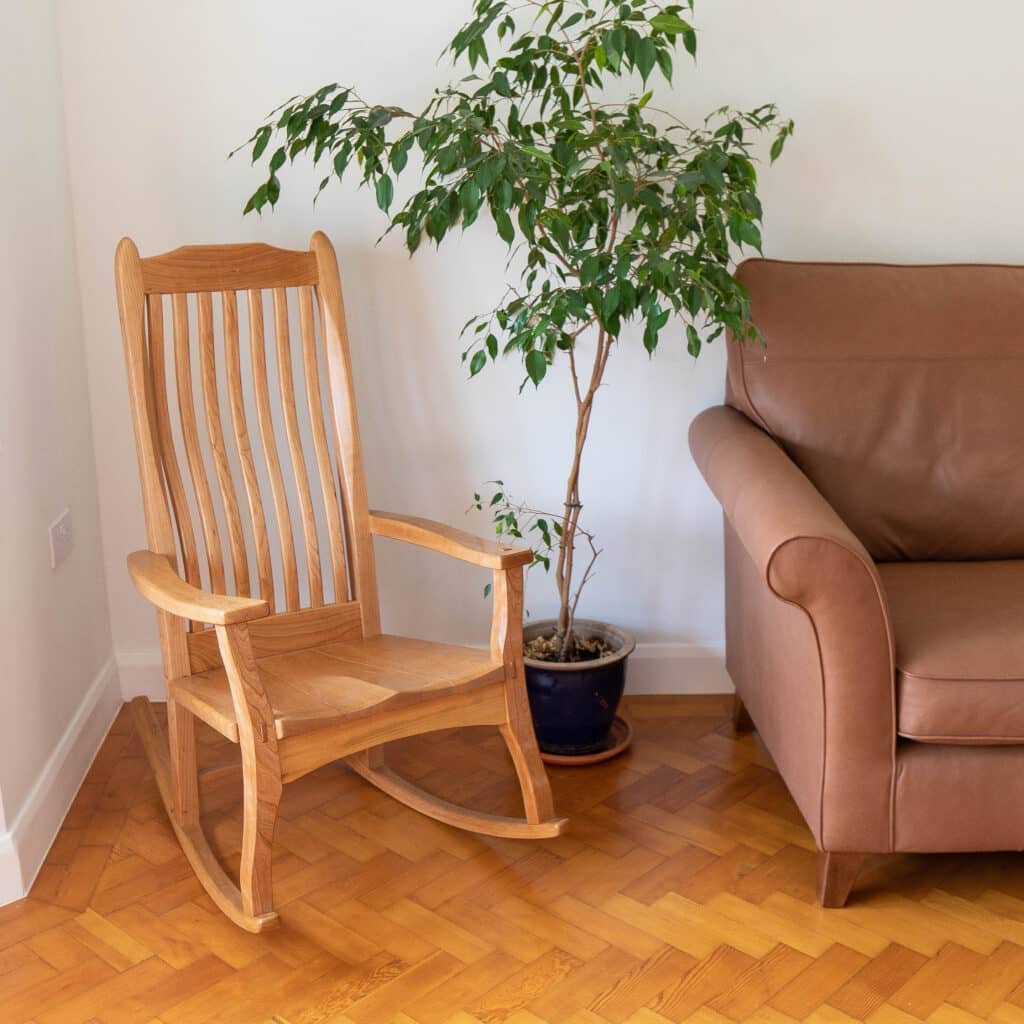
You see, it is wholly important to know the reasons, the why and the wherefore of what we do. I hope I can guide you clearly as you develop your woodworking future. You would only have come to my site for hand tool woodworking, and I take that reasoning seriously. It’s not about making you a maker that earns your living from woodworking, though it could eventually do that too, taking the baby steps, I’m doing it for crystal-clear clarity in a world where 95% of woodworkers use only machines. You might need some kind of explanation for why you feel the way you do. My world now revolves around bridging the gap for experiencing what `I have lived for 60 plus years as a full-time maker. I want to help you to avoid the kind of sidetracking or distraction other entities can creep into your life with. With so many woodworkers finally divesting themselves of the more artificial ways of making to embrace hand tool woodworking, and indeed making a big mistake and never developing what can be utterly life-changing for your future good and total wellbeing, we are giving a clear, clear message that says hand tool woodworking can be for the majority working alone in their home workshops. By my placing these stepping stones in among the mire of mass-information rooted mostly in mere opinions, I remove the boggy ground underfoot so that you don’t sink into the myths and mysteries that do often lead to confusion, With the mass of erroneous information out there, the needle gets less and less obvious in the straw. Let me start by asking what I see as a few key questions then.
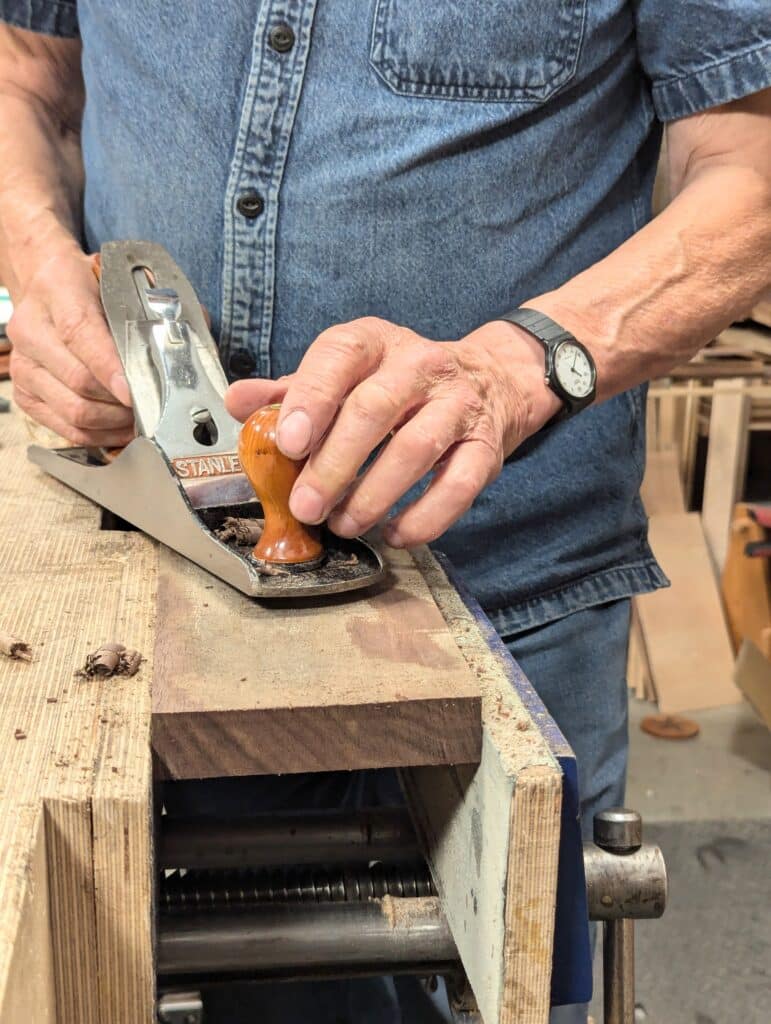
Something drew you to look in my direction. I don’t watch anyone else’s videos because I don’t need to. I have lived the life I have without influencers mostly because of my apprenticeship but then because of my age. The first time I really ever used a computor was when I was in my late 50s. In other words, I did not grow up using one and had to start from scratch. That being so, I learned photography and art along with a dozen or so other skills to support my later work teaching and training, designing and making. It was about equipping others to become woodworkers.
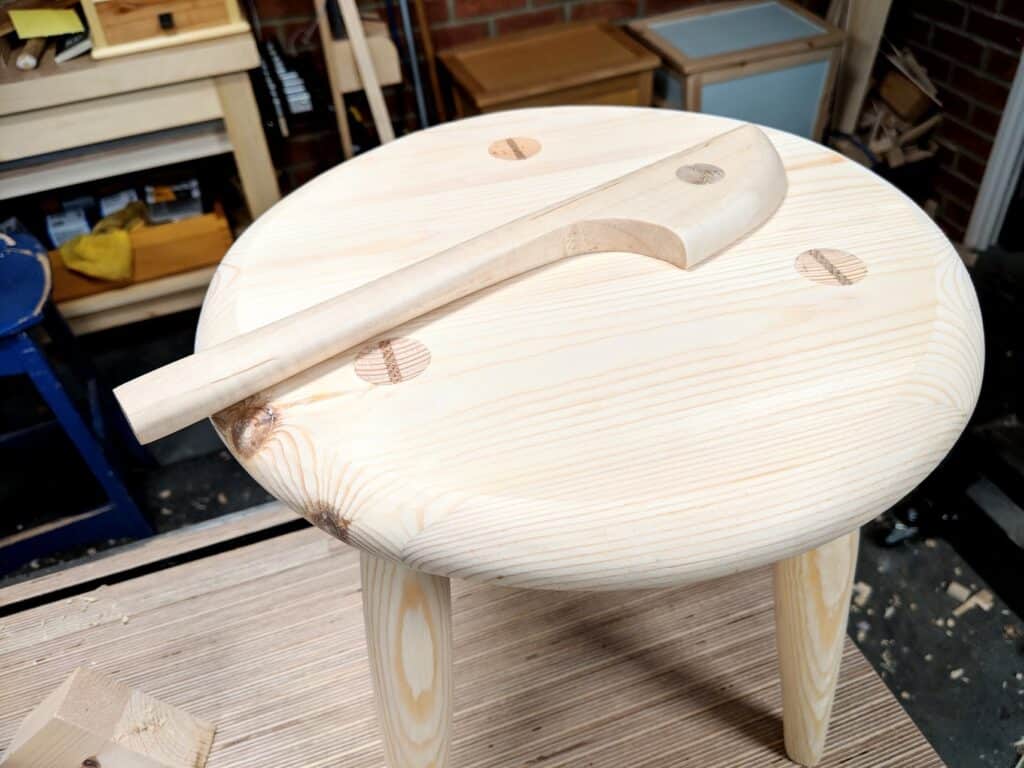
The first question you should ask yourself is what has drawn you to this point where woodworking intrigues you enough to want to invest in hand tool woodworking as a craft? A starter list might be as follows: I have spare time I didn’t have before and want/need something to do with it. I’m retiring and will no longer need to work but want substantive work for various reasons. I’m disabled and cannot work in commerce or commercial settings. I have always felt something about working with my hands, and particularly in woodworking, but never had the opportunity. My house and family need things for their home/s, and I think with time and investment I could develop the skills to make them.
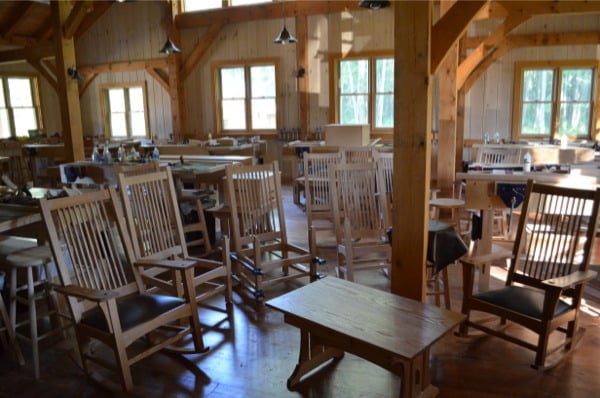
These questions are just clay on the wheel. Something to shape and mould into something you can give form and substance to. I suggest you dig deep into your inmost self and be honest about what you feel.
The second question is: How would you like to work the wood? Is it by hand or by machine? Can it be both? How you decide will again depend on several things. Machines take up a lot of floor space and the footprint per machine is not just a square or a rectangle of occupancy but the space you take up feeding the machine as you deliver wood into it and take it off at the other side. All the different machines take this kind of consideration. Some woodworkers start out by putting each machine on wheels and wheel them in and out according to needed. But over time, this gets tedious and especially when you have just put one away, and you forgot a particular cut and need to drag it out again. You must consider the noise factor for family and neighbours, and that will usually depend on the length of time in use. Of course, noise is a factor with hand tools as well. Banging and hand sawing can be invasive, even though it will always be far less than machines and dust extractors are. Of all the neighbours I have ever had, I have never had one complaint ever to date. Also, you can sound insulate your place too to minimise noise going out. I’m not going to talk too much about having both machines and hand tools, even though my experience is long term is equal in both camps. I would consider my workshop meets many demands with the minimum impact on my neighbours. I use a bandsaw, hand – held battery-driven drills, a jigsaw, a belt sand and a random orbit sander. To maintain an unpolluted atmosphere, I also hook up to a small and compact dust extractor to my bandsaw, which can be noisy but only for short bursts here and there. I might suggest here that you have already chosen hand tools as your way forward, simply because you are on my site. I do know that ten woodworkers will advise you ten different ways.
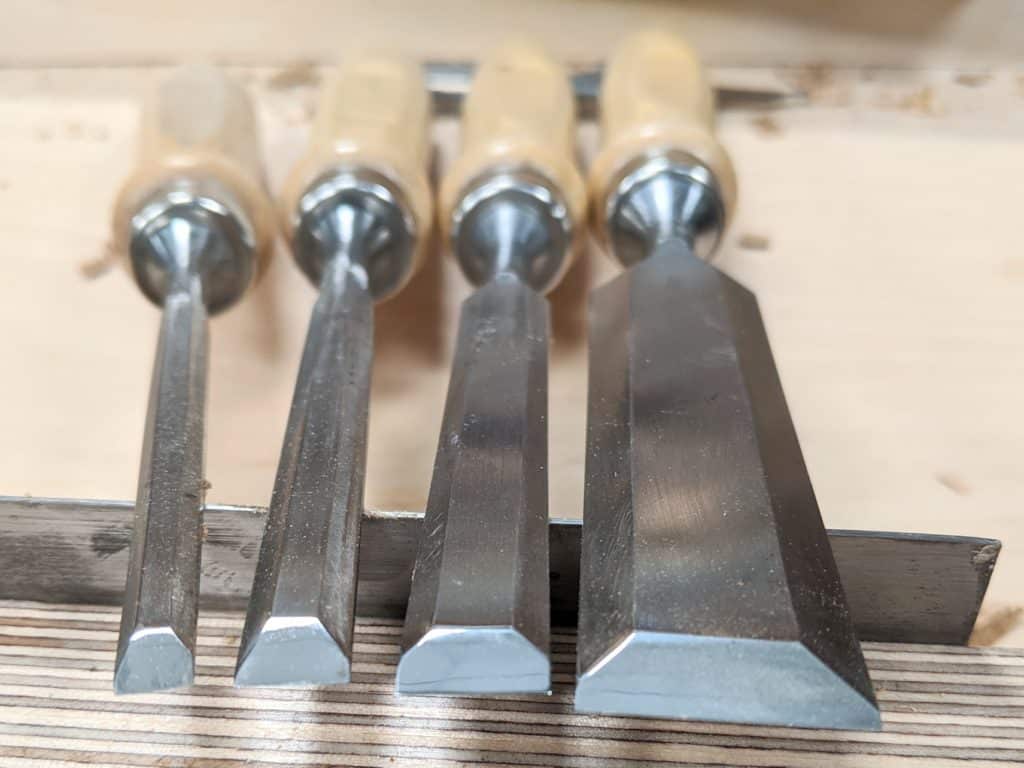
Another consideration will stem from where you live in the world, the country you live in and the town, village or house, which will include home type. Being on the 16th floor of a high rise with neighbours above, below and on three sides will have restrictive problems, but not necessarily impossibilities. Some cultures are defined by the, “Just-get-the-job-done-and-let’s-get-out-of-here!” where the making has little value or importance to them. In my world, the process is of equal value, if not greater value, than the completion of the project. Usually, these woodworking types never managed to master hand tools to any substantive degree. Not because they couldn’t but because they chose a different direction.
I am probably going to try to nudge through my biases and my prejudices here and there but preface it all by saying I like machines but choose to keep just one. I do use both belt sander and random orbit sander in my day to day, along with my drill-drivers and jigsaw. The sheets of plywood in my most recent project had too many square feet left with sander marks in by the manufacturer going across the grain for me to start planing and scraping them out. My random orbit sander took them all out in a heartbeat, which is roughly an hour instead of half a dozen.


As a young teenager I bought a B&D electric drill and several attachments, partly because it was quicker than my dad’s hand drill. Now I am just as likely to use a hand drill rather than a cordless or corded drill. I like being able to “feel” the wood as I drill. Just as Paul uses 3 drills to drill a pilot, countersink, and drive a screw I might do the same with a twist drill, countersink and screwdriver bit all in separate braces. In reality its not much slower and it gives me great satisfaction. It took me a long time to realise that it needed practice, not machines to make me better.
The realisation came in part from seeing the quality historically achieved with only hand tools, as well as the limitation on space and finance. Although I have acquired too many hand tools, much can be done with a few for little expense.
Often I will see an article about making something using machines, I am looking to see how I would do it by hand. Might be easy, or need a radical redesign.
What I regret is that it took me the best part of 5 decades, from that young teenager, to realise that I prefer hand tools. Although when I have a lot of ripping to do I use a hand held circular saw.
hi keith,
totally agree with you. those braces & bits give you that sensation of knowing the work. and you adjust fire if you feel it going astray whereas with an electric drill it is usually too late and i have wrecked the piece. theres a season for everything and i feel wwmc has resurrected hand tools. i am now confident i can get razor sharp chisels, plane blades, scissors, and knives out of diamond plates and a little wood.& leather strop and some abrasive wax. i started using shellac and painting thin coats pf that on my wooden tools. i am a tool snob. if the tool isn’t beautiful and functional i don’t like it. the machines generally to.my asthetic are ugly. then there is the hand feel and the fitness aspect and the ego of making things. you feel more like a man somehow. notntrying to be sexist. you feel more alive and yourself when crafting. empowered. do you feel that way, too?
Though I hasten to add: woodworking is anything but peaceful for me. I rage against the wood which defies my every attempt at fashioning the things I want. The four letter eruptions from my grizzled mouth are volcanic and evil. I thrash and gnash and torture the tools and wood. I’m the guy Paul would kick out of the shop for being too foul-mouthed and loud. I wrecked more wood in my lifetime than any apprentice. Humblebrag! I never give up though so there’s that? I made 389 attempts to make wooden archery bows with arrows and only #16 and #24 were even serviceable. The rest were firewood! Many mentors said: please stop trying. You can’t do it!
Learning manual stuff is a much greater challenge for me than most! I grew up in an era and part of the USA, in a tiny village where you were going to college…or else. Manual skills were seen as a dead-end in your career or just for kicks. I never had a father (or a mother really) and I never was bright enough to pick up on manual stuff. So in my 40s (almost 50) I’m trying. But I’d be damned if woodworking isn’t ballet of the hands. I destroyed and I mean totally destroyed a fine ECE hardwood wedge with a chisel trying to get the wedge to fit lower in the mouth because the shavings were jamming no matter how much I rasped and filed and sawed open the doggone mouth of the ECE plane. Apparently you can’t chop off a piece of wood with a chisel and Thor hammer. It blows out the backside of the wood and fractures. Good to know! I tried getting a sharp point on the wedge ears with a chisel because I don’t have a gouge like Paul did. That man has the patience of a saint. I ended up with two “ears” that look like me: fat and stubby and carved by a caveman!
My blades are SHARP now but I can’t get a flipping shaving! Tears of anguish and grinding teeth! P.S. I can get lovely shavings on pine but nothing harder than that. I just gums up the mouth! Two steps forward seven back! Don’t get me started on dovetails…more like ducktails.
I agree 100% to Paul’s statement, namely working mostly with hand tools! I’m 77 years old and could’t be happier!